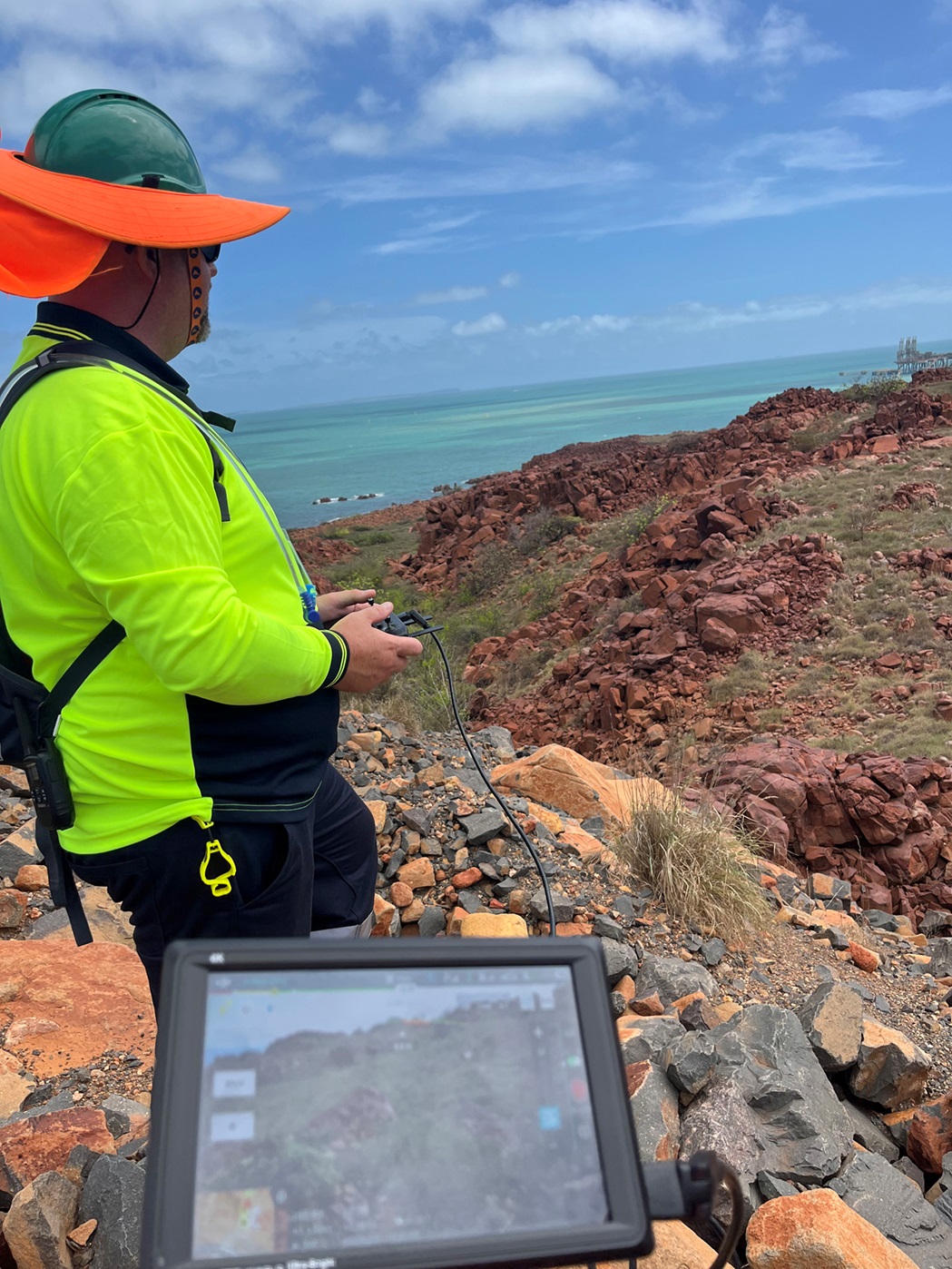
Red dwarf honey bee was first detected in March 2023 on the Burrup Peninsula, near Karratha.
The bee poses a significant threat to local European honey bees and is known to be a vector for numerous exotic bee pests, including brood diseases, mites and bee viruses.
DPIRD is leading the biosecurity response to eradicate red dwarf honey bee with assistance from the Federal Department of Agriculture, Fisheries and Forestry and the Northern Territory Department of Industry, Tourism and Trade.
A Quarantine Area remains in place for the Burrup Peninsula and to date 25 red dwarf honey bee active colonies, one swarm and 13 abandoned nests have been located and destroyed.
DPIRD plant biosecurity project manager David Cousins said the drones were being trialled as some areas on the Burrup Peninsula were difficult to access by on-ground surveillance teams.
“The drones will enable us to cover the hard to reach areas to boost surveillance efforts and check for any suspect bee colonies,” Mr Cousins said.
“We are trialling two different types of drones – one to identify water sources and map the terrain and vegetation and the other to use thermal imaging to help find nests in hard to access areas.
“As the bees are attracted to water, knowing where the fresh water sources are will help us to target surveillance to these areas.
“Mapping the terrain will provide a better picture of areas that may be difficult to access by foot.”
Mr Cousins said red dwarf honey bees were social bees and usually lived in small colonies.
“They exhibit swarm behaviour and are known to abandon their colony and relocate to a new site if conditions become unfavourable or are disturbed,” he said.
“To help track any bees that may have left a colony, new lures are also being trialled including egg yolk and sucrose syrup, water array, vane traps, bait stations and bee lining.
“The lures will be placed in areas of known red dwarf honey bee activity to identify which ones are most effective.”
Beekeepers with hives, equipment or those who have collected swarms on the peninsula are reminded they are not permitted to move them outside the Quarantine Area to prevent the pest from spreading.
Red dwarf honey bees are considerably smaller than European honey bees, just seven to 10 millimetres in length, with a red-brown abdomen and black and white bands.
Reports of unusual bees or colonies on the Burrup Peninsula should be made immediately to DPIRD’s Pest and Disease Information Service on 9368 3080, email padis@dpird.wa.gov.au or via the MyPestGuide Reporter app.
For more information on red dwarf honey bee visit the DPIRD website www.agric.wa.gov.au/red-dwarf-honey-bee


